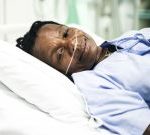
Challenges related to the COVID-19 pandemic may increase the risk of suicide, so it’s crucial to know the warning signs, a mental health expert says. Suicide is often preventable, because people considering suicide want help, according to Dr. Ahmad Hameed, a psychiatrist at Penn State Health Milton S. Hershey Medical Center in Hershey, Penn. “A majority of the time, individuals who survived a serious suicide attempt say they were relieved that they are alive and that someone was there to listen to them and understand what they were going through,” Hameed said in a Penn State news release. A U.S. Centers for Disease Control and Prevention study conducted in June found a rise in mental health conditions during the pandemic. Thirty-one percent of respondents reported symptoms of anxiety or depression, and 11% said they had seriously considered suicide in the preceding 30 days. “About 90% of individuals who die by suicide have either a diagnosed or diagnosable mental health disorder,” Hameed said. For people already prone to anxiety, health concerns, potential job loss and worries about loved ones during the pandemic can seem unbearable. “It’s time for loved ones, friends and family members to be really mindful of any potential behaviors they might see in a person with a mental health condition,” Hameed said. Some of the signs to look for include: Is a person’s… read on >


























-300x200.jpg)










